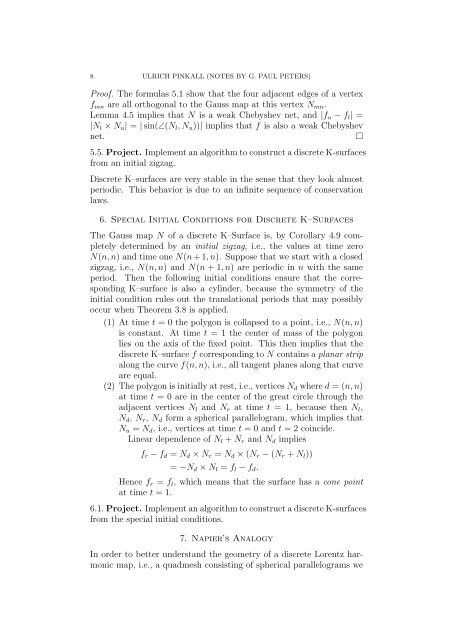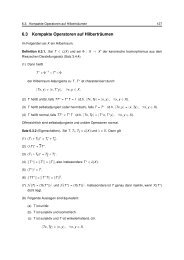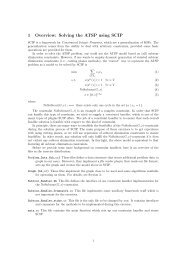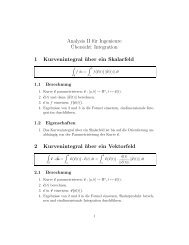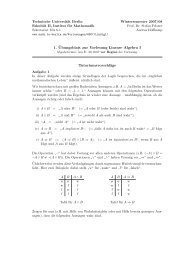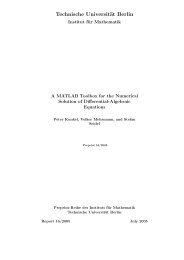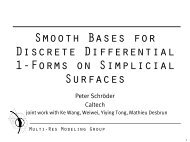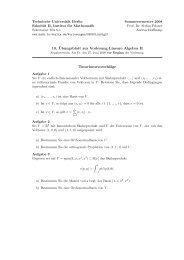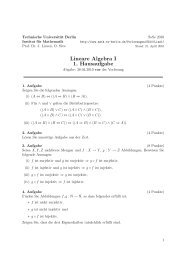Lecture notes - Institut für Mathematik - TU Berlin
Lecture notes - Institut für Mathematik - TU Berlin
Lecture notes - Institut für Mathematik - TU Berlin
You also want an ePaper? Increase the reach of your titles
YUMPU automatically turns print PDFs into web optimized ePapers that Google loves.
8 ULRICH PINKALL (NOTES BY G. PAUL PETERS)Proof. The formulas 5.1 show that the four adjacent edges of a vertexf mn are all orthogonal to the Gauss map at this vertex N mn .Lemma 4.5 implies that N is a weak Chebyshev net, and |f u − f l | =|N l × N u | = | sin(∠(N l , N u ))| implies that f is also a weak Chebyshevnet.□5.5. Project. Implement an algorithm to construct a discrete K-surfacesfrom an initial zigzag.Discrete K–surfaces are very stable in the sense that they look almostperiodic. This behavior is due to an infinite sequence of conservationlaws.6. Special Initial Conditions for Discrete K–SurfacesThe Gauss map N of a discrete K–Surface is, by Corollary 4.9 completelydetermined by an initial zigzag, i.e., the values at time zeroN(n, n) and time one N(n + 1, n). Suppose that we start with a closedzigzag, i.e., N(n, n) and N(n + 1, n) are periodic in n with the sameperiod. Then the following initial conditions ensure that the correspondingK–surface is also a cylinder, because the symmetry of theinitial condition rules out the translational periods that may possiblyoccur when Theorem 3.8 is applied.(1) At time t = 0 the polygon is collapsed to a point, i.e., N(n, n)is constant. At time t = 1 the center of mass of the polygonlies on the axis of the fixed point. This then implies that thediscrete K–surface f corresponding to N contains a planar stripalong the curve f(n, n), i.e., all tangent planes along that curveare equal.(2) The polygon is initially at rest, i.e., vertices N d where d = (n, n)at time t = 0 are in the center of the great circle through theadjacent vertices N l and N r at time t = 1, because then N l ,N d , N r , N d form a spherical parallelogram, which implies thatN u = N d , i.e., vertices at time t = 0 and t = 2 coincide.Linear dependence of N l + N r and N d impliesf r − f d = N d × N r = N d × (N r − (N r + N l ))= −N d × N l = f l − f d .Hence f r = f l , which means that the surface has a cone pointat time t = 1.6.1. Project. Implement an algorithm to construct a discrete K-surfacesfrom the special initial conditions.7. Napier’s AnalogyIn order to better understand the geometry of a discrete Lorentz harmonicmap, i.e., a quadmesh consisting of spherical parallelograms we


